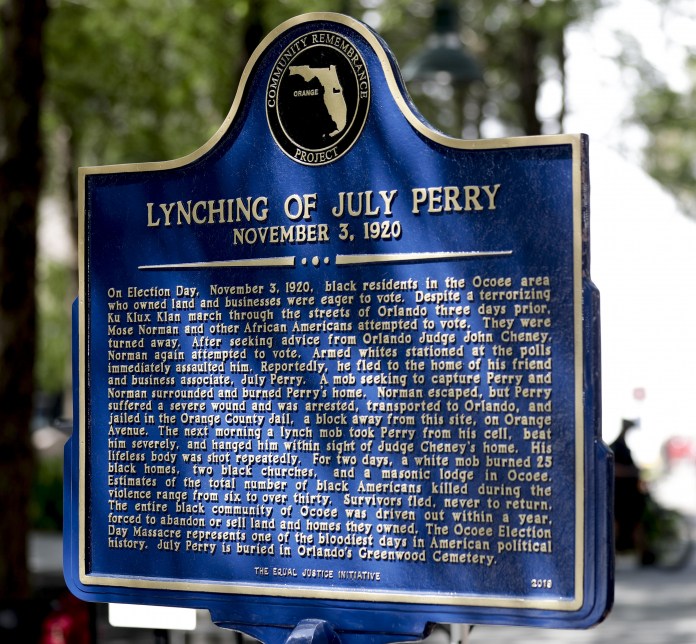

In 1920, African-Americans in Florida organized a voter registration movement ahead of a presidential election. In Ocoee, a white mob retaliated against black voters by killing some and burning their property, causing most black residents in the area to flee. Almost 100 years later, lawmakers want that history to be remembered and taught in Florida schools, museums and recognized in a state park.
Orange County, Florida, was a hot spot in the 1920s for a voter registration movement that had sparked across the state. Black churches, NAACP chapters, labor unions, and more tried to encourage black Floridians to register to vote. Paul Ortiz says their goal was to break white supremacy. He is a history professor at the University of Florida.
“On election day hundreds of African Americans tried to register—or tried to vote—all throughout western Orange County… Especially in Ocoee, there was a large group that tried to vote and were turned away from the polls on several occasions,” Ortiz says.
One of the people turned away was Moses Norman. He went to an attorney who advised him to start recording who was not permitted to vote and who was denying them, which Ortiz says, was a serious threat because if Norman could prove the state was limiting people’s right to vote, Florida could lose congressional representation.
“So if you’re documenting that and you’re providing evidence to the NAACP, you’re public enemy number one, and the authorities are going to target you for violence,” Ortiz says.
Norman fled to the house of a prominent black leader in Ocoee named Julius “July” Perry. A white posse formed and was deputized by the county sheriff to find and arrest the two men. The posse captured Perry, and later hanged, lynched, and shot him. They also tried finding Norman, but he escaped. A mob then burned black-owned property. Including two churches and more than 20 houses—causing black residents to flee. Their land was later sold.
“The Ocoee Election Day Massacre is still to this day, the bloodiest day in American political history,” Sen. Randolph Bracy (D-Orlando) says.


Ortiz notes due to a cover-up, it is not known precisely how many people were killed. Estimates range from 3 to 60 black residents. Now Bracy is pushing a bill to direct the Commissioner of Education’s African American History Task Force to see how the massacre can be taught in schools. It also would direct the Secretary of State to see how museums can teach and include it in the Smithsonian Institution.
“I think it’s important that we talk about our history… I think it’s important for really true racial reconciliation that we acknowledge our history, and I think that’s how we move forward… I think this bill is a step in that direction,” he says.
Bracy’s proposal would allow officials to see if any state park can be named after the massacre’s victims. The bill has gained almost unanimous support in the legislature.
“We must always talk about the right to vote. The basic right of people to participate in government… When atrocities happen that try to erect barriers to voting, we must identify them. Tell the story, or we’re doomed to repeat it,” Sen. Darryl Rouson (D-St. Petersburg) says.
The only lawmaker to vote against the bill in a committee is Sen. Dennis Baxley (R-Lady Lake). The proposal passed a full chamber vote in the Senate. It’s unclear what the House will do with the bill as the legisaltion never made it out of reference committees.
9(MDA4MzU1MzUzMDEzMTkyMzAwMzY5MjY1Mw004))
9(MDA4MzU1MzUzMDEzMTkyMzAwMzY5MjY1Mw004))


